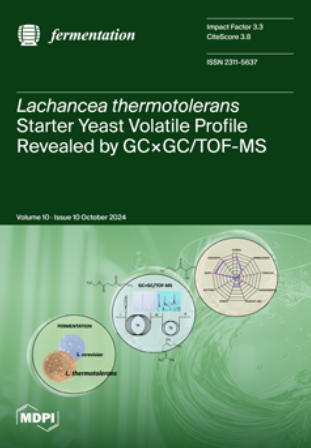Impact of Thermo-Mechanical Pretreatment of Sargassum muticum on Anaerobic Co-Digestion with Wheat Straw
IF 3.3
3区 农林科学
Q2 BIOTECHNOLOGY & APPLIED MICROBIOLOGY
引用次数: 0
Abstract
Sargassum muticum (SM) is an invasive macroalgal species seasonally occurring in large quantities. While generally suitable for anaerobic digestion, recent studies resulted in low specific methane yields (SMYs), presumably due to salt, polyphenol, and high fiber contents of this marine biomass. In this study, the specific biogas yield (SBY) and SMY of SM alone as well as in co-digestion with wheat straw (WS) were investigated in batch tests at process temperatures of 44 ± 1.4 °C with a retention time of approx. 40 d. The pretreatment variants of SM were examined with regard to desalination and disintegration to potentially improve digestibility and to enhance the overall performance in anaerobic digestion. A sole mechanical treatment (pressing) and a thermo-mechanical treatment (heating and pressing) were tested. Batch assays showed that pressing increased the SMY by 15.1% whereas heating and pressing decreased the SMY by 15.7% compared to the untreated variant (87.64 ± 8.72 mL/gVS). Both anaerobic digestion experiments generally showed that co-digestion with WS can be recommended for SM, but the observed SBY and SMY were still similar to those of other studies in which SM was not pretreated. The mechanical pretreatment of SM, however, offers the potential to enhance the SMY in the anaerobic digestion of SM with WS, but further research is necessary to identify the optimum upgrading approaches since the overall SMY of SM is relatively low compared to other substrates that are commonly used in anaerobic digestion. In addition to anaerobic digestion, SM as an already available biomass could also be of interest for further utilization approaches such as fiber production.马尾藻热机械预处理对麦草厌氧共消化的影响
马尾藻(Sargassum muticum, SM)是一种季节性大量入侵的大型藻类。虽然通常适合厌氧消化,但最近的研究表明,由于这种海洋生物质的盐、多酚和高纤维含量,甲烷的比产率(SMYs)很低。本研究在处理温度为44±1.4℃,停留时间约为44±1.4℃的间歇试验中,研究了秸秆单独发酵以及与麦秸共消化的比产气量(SBY)和比产气量(SMY)。40 d.对SM的预处理变体进行了脱盐和分解测试,以潜在地提高消化率并提高厌氧消化的整体性能。测试了鞋底机械处理(压紧)和热机械处理(加热和压紧)。批量实验显示,与未处理的菌株相比,压榨使SMY提高了15.1%,而加热和压榨使SMY降低了15.7%(87.64±8.72 mL/gVS)。两项厌氧消化实验普遍表明,SM可与WS共消化,但观察到的SBY和SMY仍与其他SM未预处理的研究相似。然而,SM的机械预处理有可能提高SM与WS厌氧消化中的SMY,但由于SM的总体SMY与其他常用的厌氧消化基质相比相对较低,因此需要进一步研究以确定最佳的升级方法。除了厌氧消化之外,SM作为一种已经可用的生物质也可以用于进一步的利用方法,如纤维生产。
本文章由计算机程序翻译,如有差异,请以英文原文为准。
求助全文
约1分钟内获得全文
求助全文
来源期刊

Fermentation-Basel
BIOTECHNOLOGY & APPLIED MICROBIOLOGY-
CiteScore
3.80
自引率
18.90%
发文量
594
审稿时长
7 weeks
期刊介绍:
Fermentation-Basel is an international open access journal published by MDPI, focusing on fermentation-related research, including new and emerging products, processes and technologies, such as biopharmaceuticals and biotech drugs. The journal enjoys a good reputation in the academic community and provides a high-impact forum for researchers in the field of bioengineering and applied microbiology.
 求助内容:
求助内容: 应助结果提醒方式:
应助结果提醒方式:


